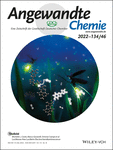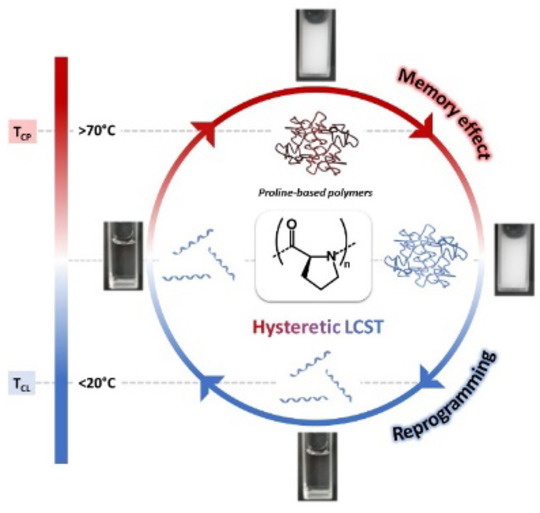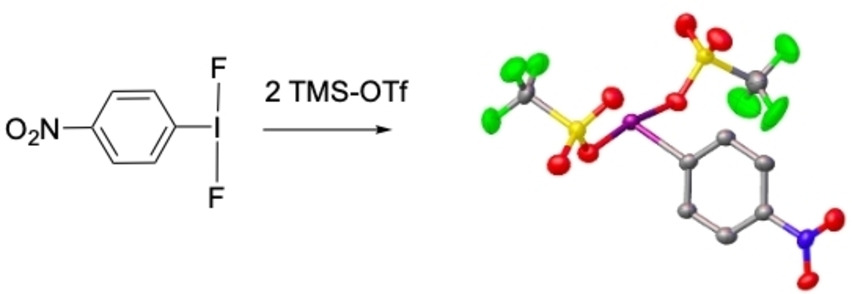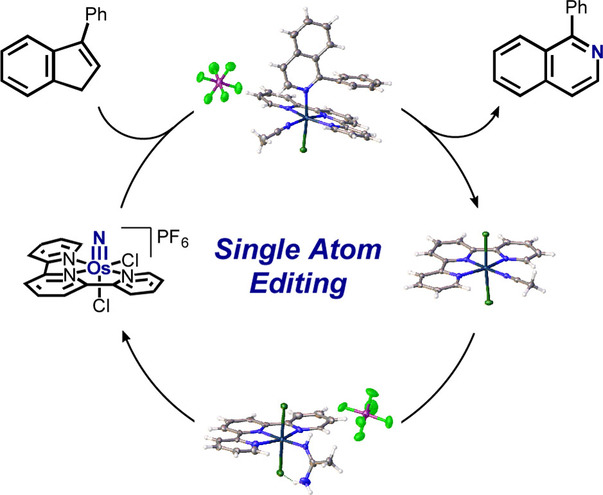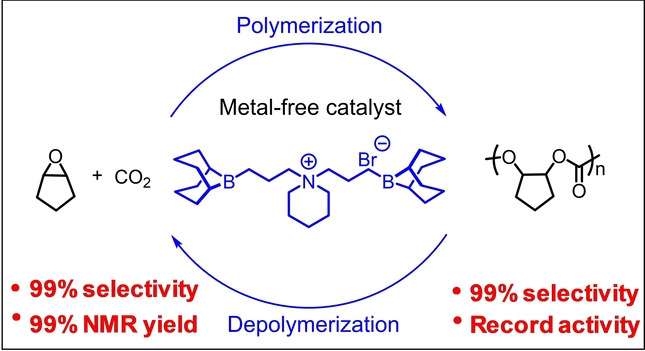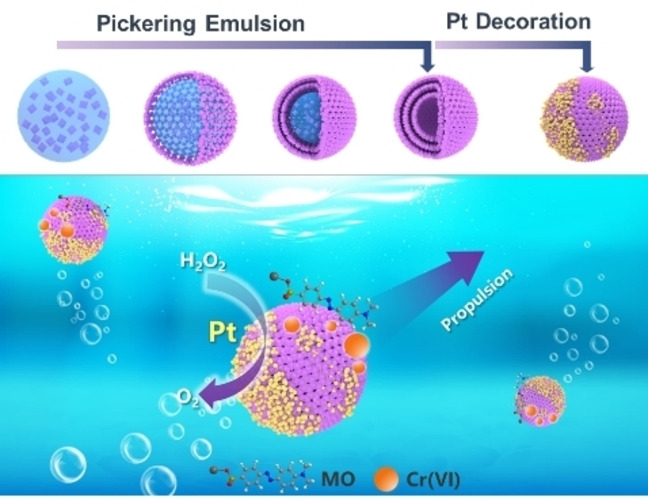Journal list menu
Export Citations
Download PDFs
Titelbild
Titelbild: Luciferase-free Luciferin Electrochemiluminescence (Angew. Chem. 46/2022)
- First Published: 27 October 2022
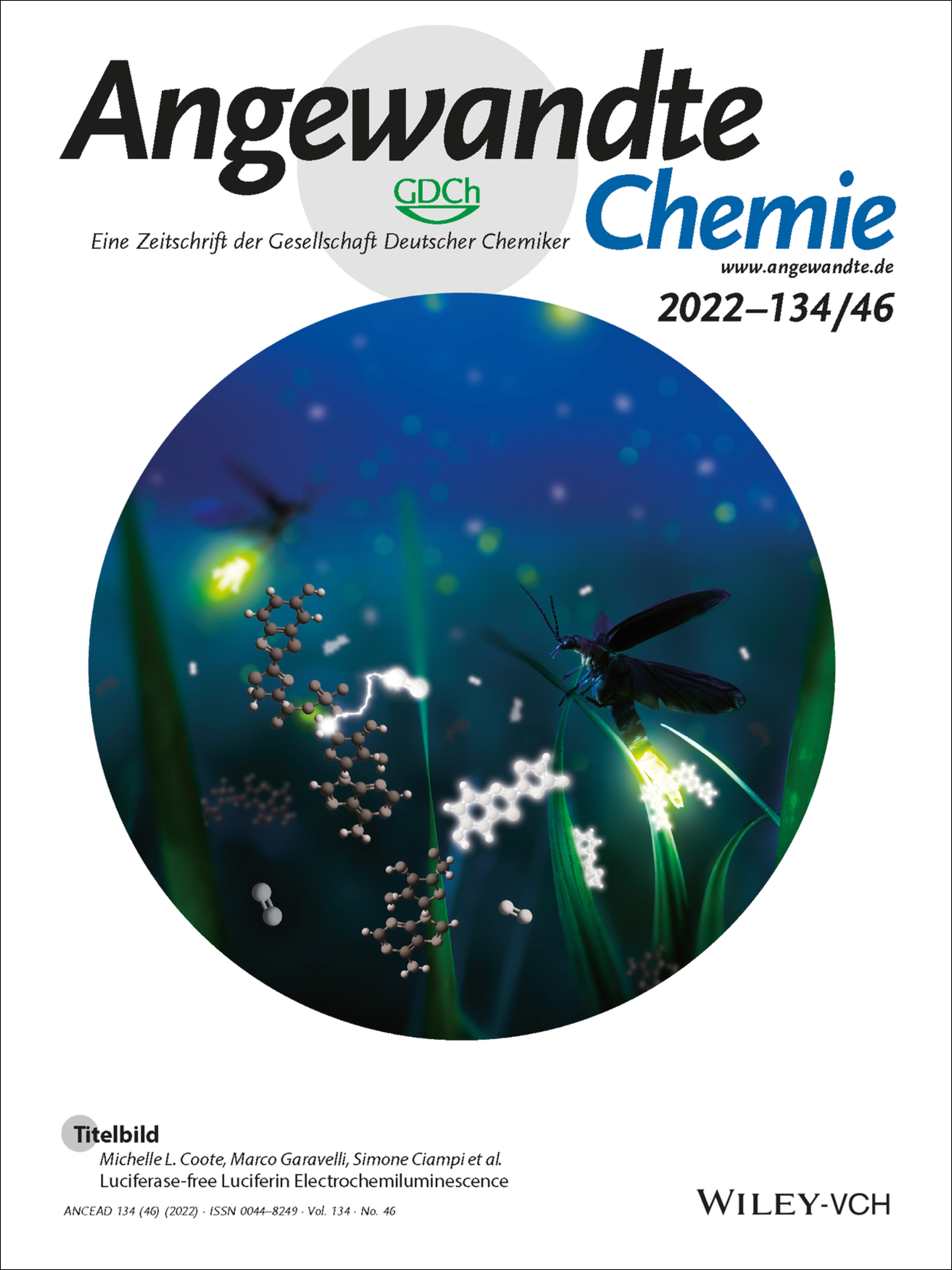
Die spektrale Abstimmung der Elektrochemilumineszenz (ECL) von Luciferin – von grün nach rot – wird durch Elektrolyt-Engineering erreicht, was zeigt, dass dafür keine Keto/Enol-Isomerisierung des Emitters erforderlich ist. Die visuelle Darstellung der ECL von Luciferin ermöglicht eine unkomplizierte optische Messung der Superoxid-Diffusivität, wie Michelle L. Coote, Marco Garavelli, Simone Ciampi et al. in ihrem Forschungsartikel demonstrieren (e202209670).
Innentitelbild: Von lokalen kovalenten Bindungen zu langreichweitigen elektrischen Wechselwirkungen der Protonenhydratation (Angew. Chem. 46/2022)
- First Published: 27 October 2022
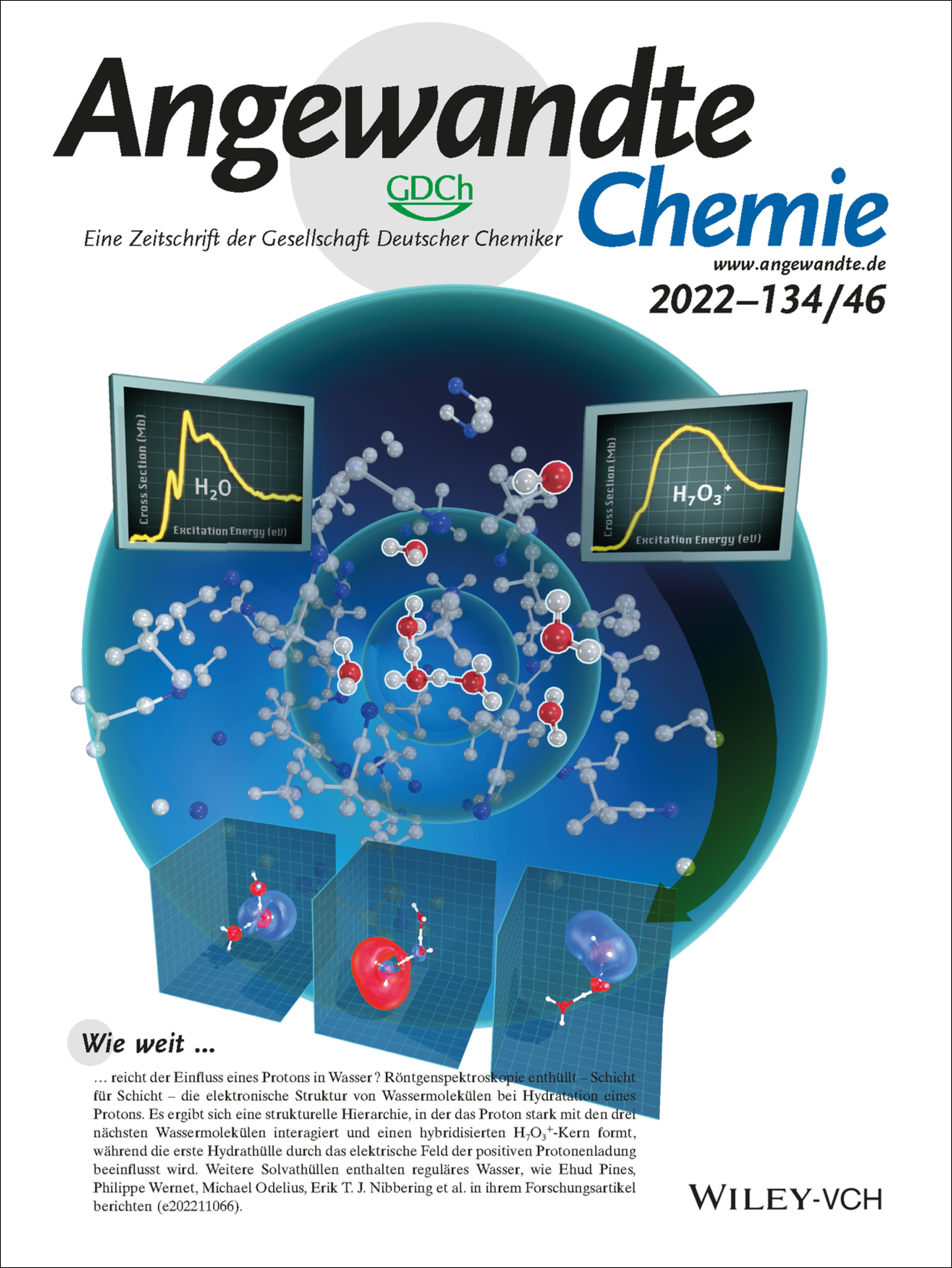
Wie weit reicht der Einfluss eines Protons in Wasser? Röntgenspektroskopie enthüllt – Schicht für Schicht – die elektronische Struktur von Wassermolekülen bei Hydratation eines Protons. Es ergibt sich eine strukturelle Hierarchie, in der das Proton stark mit den drei nächsten Wassermolekülen interagiert und einen hybridisierten H7O3+-Kern formt, während die erste Hydrathülle durch das elektrische Feld der positiven Protonenladung beeinflusst wird. Weitere Solvathüllen enthalten reguläres Wasser, wie Ehud Pines, Philippe Wernet, Michael Odelius, Erik T. J. Nibbering et al. in ihrem Forschungsartikel berichten (e202211066).
Innenrücktitelbild: Intraligand Charge Transfer Enables Visible-Light-Mediated Nickel-Catalyzed Cross-Coupling Reactions (Angew. Chem. 46/2022)
- First Published: 27 October 2022
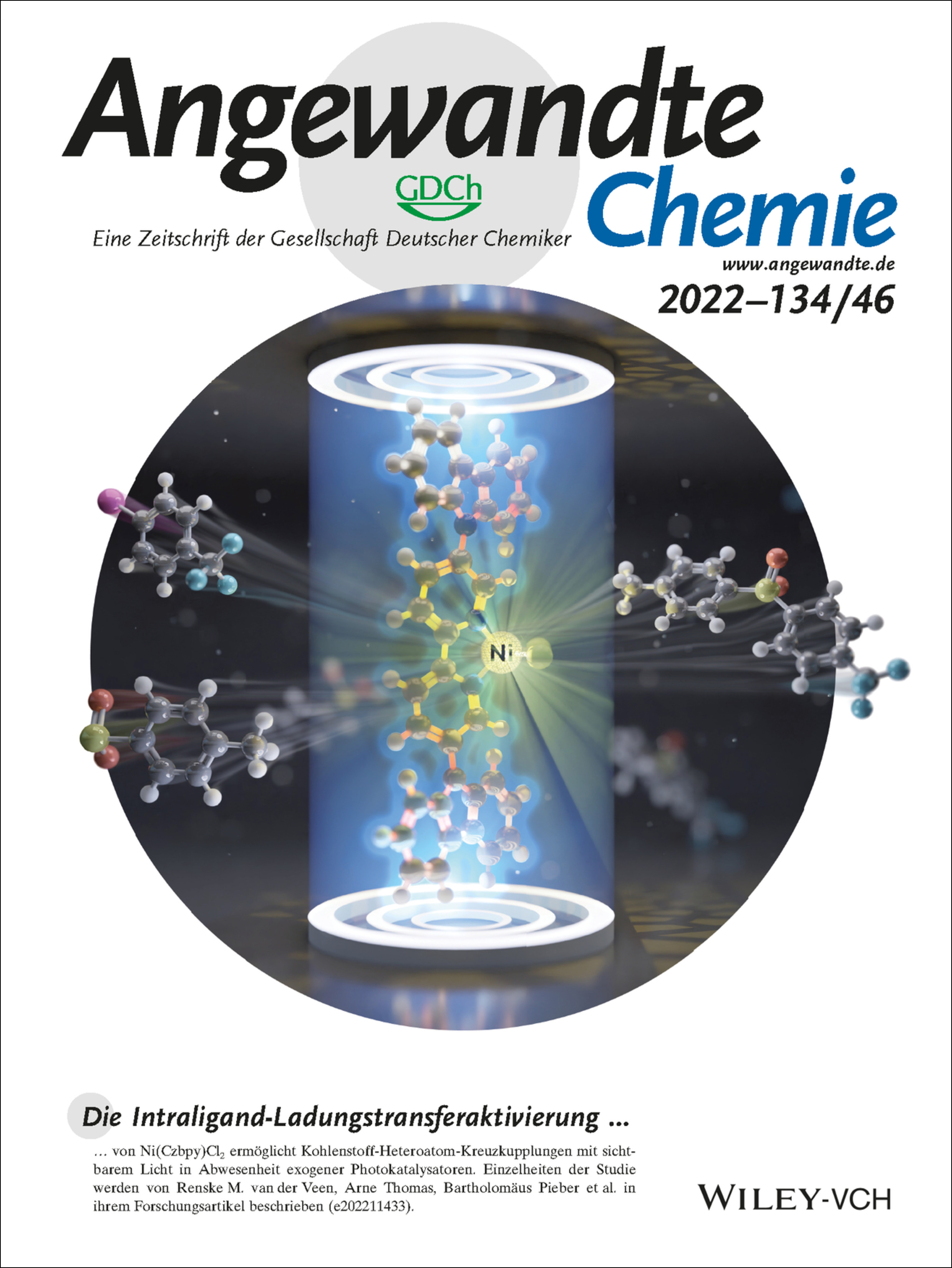
Die Intraligand-Ladungstransferaktivierung von Ni(Czbpy)Cl2 ermöglicht Kohlenstoff-Heteroatom-Kreuzkupplungen mit sichtbarem Licht in Abwesenheit exogener Photokatalysatoren. Einzelheiten der Studie werden von Renske M. van der Veen, Arne Thomas, Bartholomäus Pieber et al. in ihrem Forschungsartikel beschrieben (e202211433).
Rücktitelbild: Memory Effect in Thermoresponsive Proline-based Polymers (Angew. Chem. 46/2022)
- First Published: 27 October 2022

Thermoresponsive Polymere unterliegen einer Phasentrennung als Reaktion auf Temperaturänderungen. In ihrer Zuschrift (e202209530) stellen Simon Harrisson, Colin Bonduelle et al. die Verwendung synthetischer Polymere vor, die aus L-Prolin-Monomereinheiten bestehen und eine temperaturgesteuerte Aggregation in Wasser mit beispielloser Hysterese zeigen. Dieses proteinähnliche Verhalten ebnet den Weg zu neuen Prozessen, die entweder durch Temperatur- oder Ionenstärkeänderungen angetrieben werden, wie z. B. einfache Thermometer “mit Gedächtnis".
Graphisches Inhaltsverzeichnis
Graphisches Inhaltsverzeichnis: Angew. Chem. 46/2022
- First Published: 07 November 2022
Introducing …
Korrespondenz
Inhibitors
Correspondence on “Synergy and Antagonism between Allosteric and Active-Site Inhibitors of Abl Tyrosine Kinase”
- First Published: 18 October 2022
Soellner published on the interplay between allosteric and adenosine triphosphate (ATP)-competitive inhibitors of ABL kinase, showing that the latter preferably binds to different conformational states of ABL compared to allosteric agents that specifically target the ABL myristate pocket (STAMP) and deducing that asciminib cannot bind to ABL simultaneously with ATP-competitive drugs. These results are to some extent in line with ours, although our analyses of dose-response matrices from combinations of asciminib with imatinib, nilotinib or dasatinib, show neither synergy nor antagonism, but suggest additive antiproliferative effects on BCR-ABL-dependent KCL22 cells. Furthermore, our X-ray crystallographic, solution nuclear magnetic resonance (NMR), and isothermal titration calorimetry studies show that asciminib can bind ABL concomitantly with type-1 or -2 ATP-competitive inhibitors to form ternary complexes.
Medicinal Chemistry
Reply to Correspondence on “Synergy and Antagonism between Allosteric and Active-Site Inhibitors of Abl Tyrosine Kinase”
- First Published: 25 October 2022
At pharmacologically relevant concentrations, asciminib and clinical adenosine triphosphate (ATP) kinase inhibitors cannot simultaneously bind to Abl kinase. Manley and co-workers correspond that at saturating concentrations (i.e., concentrations that are not achievable in a human), asciminib and dasatinib can simultaneously bind to Abl kinase.
Kurzaufsätze
CO2 Utilization
Challenges and Prospects in the Catalytic Conversion of Carbon Dioxide to Formaldehyde
- First Published: 06 September 2022
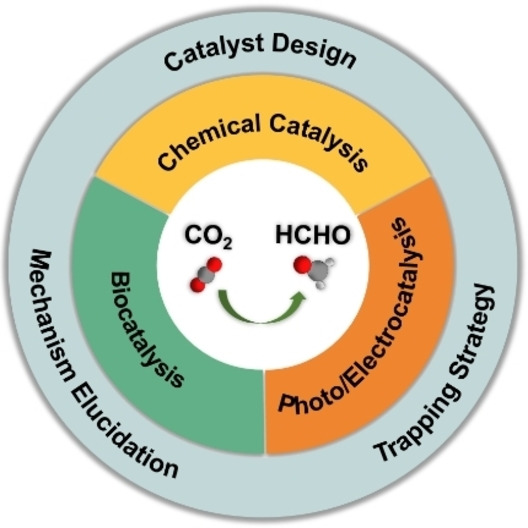
This Minireview summarizes recent progress in the production of HCHO from CO2, including chemical catalysis (hydrogenation using H2 and hydroboration/hydrosilylation), photo/electrocatalysis, and biocatalysis (enzymatic reduction). From analysis of advantages and deficits of each methodology, we present viewpoints and potential strategies for optimizing the CO2-to-HCHO conversion.
Aufsätze
Organofluorine Compounds
Catalytic and Stereoselective Transformations with Easily Accessible and Purchasable Allyl and Alkenyl Fluorides
- First Published: 26 August 2022

This Review analyzes recent advances regarding the preparation of complex and stereochemically defined fluoro-organic molecules by routes originating from purchasable or readily accessible alkenyl and allylic fluorides. The untapped potential of other, far less explored, commercially available organofluorine compounds as launching points for the development of stereoselective processes that may be valuable to drug discovery is underscored.
Green Chemistry
Green Carbon Science: Keeping the Pace in Practice
- First Published: 22 August 2022
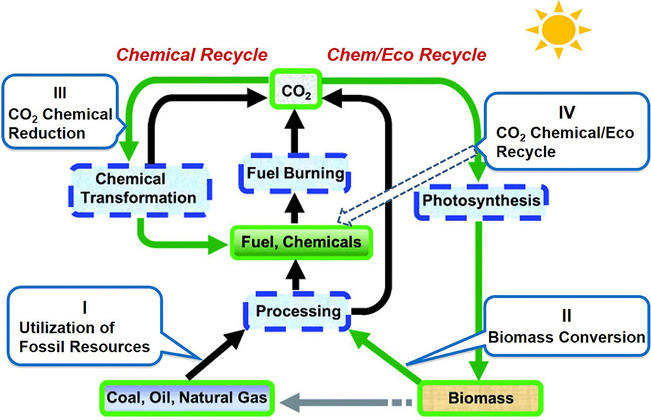
Efforts to deepen the understanding of sustainable development have resulted in the concept of green carbon science. In this Review, technological achievements in green carbon science are discussed, with a focus on pilot testing, industrial demonstrations, and commercial applications beyond the laboratory stage.
Zuschriften
Liquid–Liquid Phase Separation | Hot Paper
Direct Observation of “Elongated” Conformational States in α-Synuclein upon Liquid-Liquid Phase Separation
- First Published: 17 September 2022
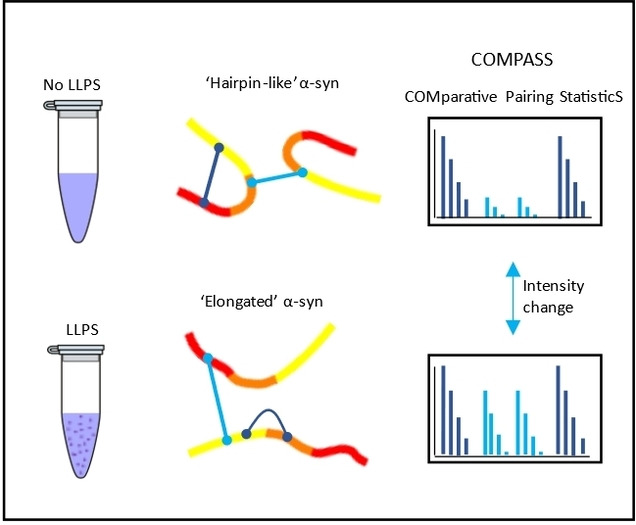
By introducing a modified cross-linking mass spectrometry (XL–MS) approach, termed COMPASS (COMPetitive Pairing StatisticS), we unravel conformational changes of the intrinsically disordered protein α-synuclein upon liquid-liquid phase separation (LLPS). The conformational ensemble of α-synuclein shifts from a “hairpin-like” structure towards more “elongated” conformational states in liquid droplets. During this early LLPS stage, α-synuclein remains monomeric and highly flexible.
Protein Modifications | Hot Paper
Cysteine-Assisted Click-Chemistry for Proximity-Driven, Site-Specific Acetylation of Histones
- First Published: 20 September 2022
Metal–Organic Frameworks | Hot Paper
Monte Carlo Simulation-Guided Design of a Thorium-Based Metal–Organic Framework for Efficient Radiotherapy-Radiodynamic Therapy
- First Published: 23 September 2022
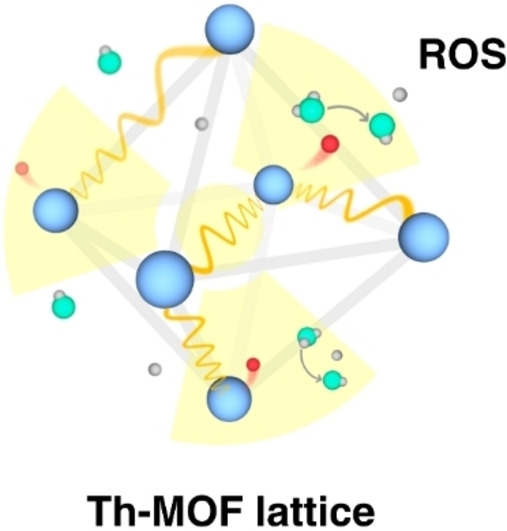
After demonstrating the potential of Th-based nanoscale metal–organic framework (nMOF) as excellent radiosensitizer with Monte Carlo simulations, we designed Th-DBP nMOF with Th6 secondary building units and DBP photosensitizers for efficient radiotherapy-radiodynamic therapy. Th-DBP greatly enhanced hydroxyl radical and 1O2 generation upon irradiation to kill cancer cells and regress colon and pancreatic cancers in mice models.
N-Heterocycles
Photochemical C(sp2)−H Pyridination via Arene–Pyridinium Electron Donor–Acceptor Complexes
- First Published: 13 September 2022
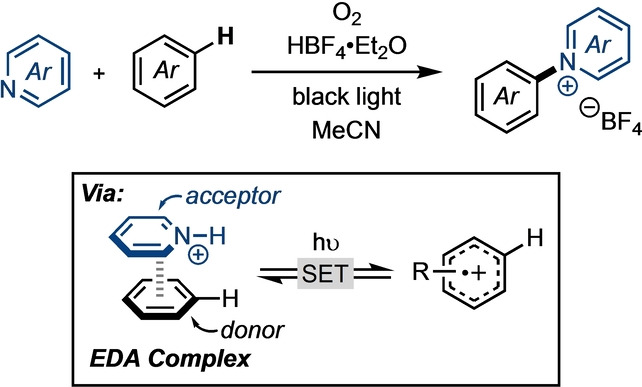
We leverage the photoexcitation of arene–pyridinium electron donor–acceptor (EDA) complexes to achieve C(sp2)−H pyridination. Black light irradiation of the simple combination of arene substrate, pyridine, acid (to generate a pyridinium acceptor in situ), and O2 (terminal oxidant) affords N-arylpyridinium products. This transformation proceeds without an exogenous photocatalyst, complementing prior photochemical C(sp2)−H amination methods.
Computational Chemistry
Design of Frustrated Lewis Pair Catalysts for Direct Hydrogenation of CO2
- First Published: 16 September 2022
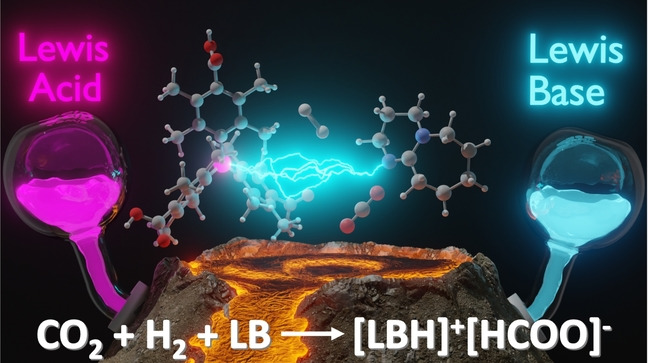
The chemical composition of frustrated Lewis pairs is mapped to their performance in catalytic direct hydrogenation of CO2 to formate using linear scaling relationships. This map highlights the need for appropriately balancing the acidity and basicity of the components for enhanced activity, which led to the demonstration of hitherto unreported catalytic turnover for this transformation.
Reduction Reactions
Titanium-Catalyzed Exhaustive Reduction of Oxo-Chemicals
- First Published: 19 September 2022

A catalytic system involving titanium used for the exhaustive reduction of carboxylic acid derivatives to the corresponding methyl- compounds is reported. The catalytic system also works with other types of oxo-chemicals such as alcohols, aldehydes, ketones, lactones, and carboxylates while the products might be promising for bio-applications. Preliminary mechanistic studies reveal that the in situ generated TiIII−H species was key for this transformation.
Polymerization | Hot Paper
Memory Effect in Thermoresponsive Proline-based Polymers
- First Published: 15 September 2022
Triboelectric Materials
Core-Shell ZnO@Microporous Organic Polymer Nanospheres as Enhanced Piezo-Triboelectric Energy Harvesting Materials
- First Published: 21 September 2022
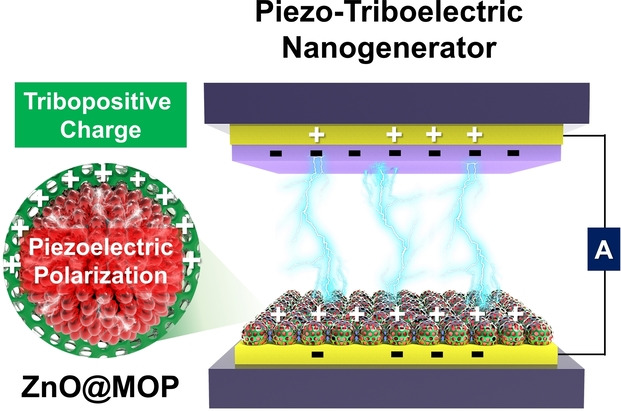
Piezoelectric ZnO core-triboelectric microporous organic polymer (MOP) shell nanoparticles showed enhanced small energy harvesting performance, compared with ZnO and MOP. The piezo-triboelectric nanogenerator (PTENG) with the optimized 7 wt % ZnO@MOP/polyvinylpyrrolidone (PVP) film showed excellent durability for 30 000 cycles with peak-to-peak voltages of up to 534 V and a maximum power density of 1.19 mW cm−2.
Homogeneous Catalysis
Nickel-Hydride-Catalyzed Diastereo- and Enantioselective Hydroalkylation of Cyclopropenes
- First Published: 19 September 2022

The first nickel-hydride-catalyzed diastereo- and enantioselective hydroalkylation of cyclopropenes has been developed for rapid synthesis of chiral alkylcyclopropane motifs. The reaction is efficient and versatile, taking place under mild conditions, and having excellent functional group tolerance. Concise asymmetric synthesis of antidepressant drug, D-Milnacipran, was performed to demonstrate the synthetic usefulness.
Total Synthesis
Total Syntheses of (±)-Dracocephalone A and (±)-Dracocequinones A and B
- First Published: 19 September 2022

Described herein are the first total syntheses of (±)-dracocephalone A (1) and (±)-dracocequinones A (4) and B (5). An initially-envisioned intramolecular isobenzofuran Diels–Alder strategy guided the evolution of a Lewis acid-promoted spirocyclization approach that allowed for access to the carbocyclic core of 1. Further advancement by a series of carefully choreographed oxidations and rearrangements allowed for conversion to 1, 4, and 5.
Electrochemical Interfaces | Hot Paper
Structure of the (Bi)carbonate Adlayer on Cu(100) Electrodes
- First Published: 19 September 2022
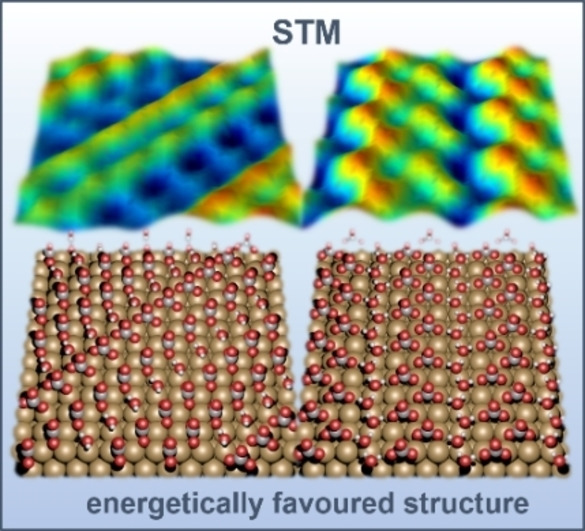
The molecular-scale structure of the interface between copper electrodes and bicarbonate electrolyte, a key system for electrochemical CO2 reduction, is clarified by in situ scanning tunneling microscopy, revealing two highly complex coexisting adlayer structures above a critical potential. Ab initio calculations identify these as carbonate/water coadsorbate layers and indicate a strongly stabilizing effect of the adjacent liquid solution.
Multi-Component Reaction | Hot Paper
Copper-Catalyzed Boroaminomethylation of Olefins to γ-Boryl Amines with CO as C1 Source
- First Published: 23 September 2022

Boroaminomethylation of olefins with CO as −CH2-source via the mechanism of a carbene insertion into the N−H bond was described. In the present of CuCl and Xantphos as the catalyst, a variety of γ-boryl amines were obtained with broad functional groups tolerance. The new aromatization and other transformations of the γ-boryl amines demonstrate their utility. Notably, 13C labeled product was produced with isotope-labeled 13CO.
Chirality Transfer
Palladium-Catalyzed Transient Chirality Transfer and Atroposelective C-H Functionalization to Access Quaternary Stereocenters
- First Published: 27 September 2022

An enantioselective [3+2] annulation of oxime ethers and alkynes has been developed via catalytic transient axial-to-central chirality transfer strategy. More importantly, this annulation represents a rare example of construction of all-carbon quaternary centers through tandem PdII-catalyzed atroposelective C−H activation/double carbopalladation process.
N-Heterocycles
Arylboration of Enecarbamates for the Synthesis of Borylated Saturated N-Heterocycles
- First Published: 17 October 2022
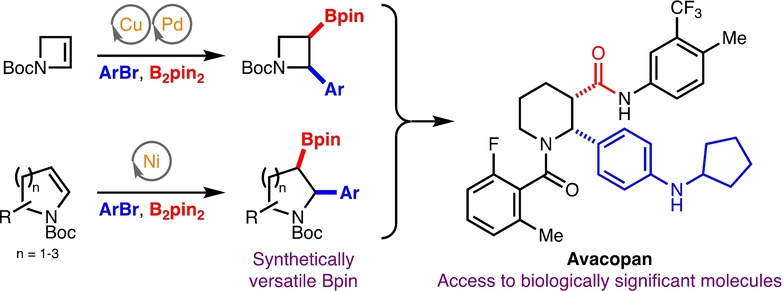
Saturated N-heterocycles are important motifs found in many biologically active molecules. In this work, difunctionalization of 4–7-membered enecarbamates is achieved using both Cu/Pd and Ni-catalysed arylboration to deliver synthetically versatile borylated saturated N-heterocycles in good selectivity. The products are synthetically useful, as demonstrated by manipulations of the boronic ester to access biologically active compounds.
Peptide Natural Products
Bioinspired Total Synthesis of Pyritide A2 through Pyridine Ring Synthesis
- First Published: 19 September 2022

The chemical synthesis of pyridine-containing macrocyclic peptide pyritide A2 is reported. Inspired by biosynthesis, which proceeds through cycloaddition of post-translationally modified peptides, the described approach features rapid synthesis of a trisubstituted pyridine directly from a simple amino acid precursor. This strategy proved general for the preparation of different pyridines associated with this class of natural products.
Hypervalent Iodine
Synthesis and Structural Verification of an ArI(OTf)2, NO2-Ph-I(OTf)2
- First Published: 14 September 2022
Theranostics
A Water-Stable and Red-Emissive Radical Cation for Mutp53 Cancer Therapy
- First Published: 23 September 2022
Polymerization
A Topology-Defined Polyester Elastomer from CO2 and 1,3-Butadiene: A One-Pot-One-Step “Scrambling Polymerizations” Strategy
- First Published: 24 September 2022

A novel strategy named “scrambling polymerizations” is realized to produce polyester with tunable topologies by one-pot-one-step ring-opening copolymerization of a substituted δ-lactone derived from CO2 and 1,3-butadiene with ϵ-caprolactone mediated by sodium phenolate. The obtained transparent, non-cytotoxic and degradable network presents great resilience and excellent elastic recovery properties for application as a polyester elastomer.
Molecular Editing
A Synthetic Cycle for Heteroarene Synthesis by Nitride Insertion
- First Published: 22 September 2022
Polymerisation
Perfekt Isotaktisches Polypropylen nach In Situ Aktivierung von Ultrarigiden meso Hafnocenen
- First Published: 20 September 2022

Durch die in situ Aktivierung des Hafnocens meso-I wird isotaktisches Polypropylen anstelle des ataktischen Polypropylens von meso-I und rac-I hergestellt. Mit unserem praktischem Isomerisierungs- und Polymerisationsprotokoll lassen sich Produktivitäten erzielen, die mit reinem rac-I vergleichbar sind, wenn es auf reines meso-I oder ein Gemisch aus beiden Isomeren angewendet wird.
Forschungsartikel
Physikalische Chemie | Hot Paper
Von lokalen kovalenten Bindungen zu langreichweitigen elektrischen Wechselwirkungen der Protonenhydratation
- First Published: 14 September 2022
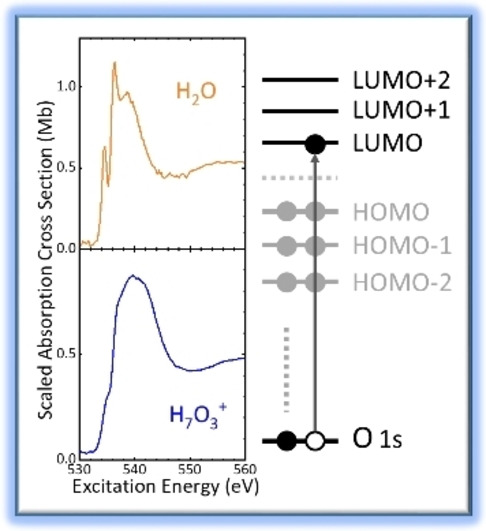
Sauerstoff-K-Kantenspektroskopie des hydratisierten Protonenkomplexes in Lösung bietet stichhaltige Beweise eines ausgeprägten Einflusses auf die elektronsiche Struktur der Wassermoleküle, die an der Hydratation beteiligt sind, wobei eine Hierarchie der Kopplungsstärke zum Proton durch tiefgreifend starke Orbitalwechselwirkungen in den räumlich nächsten drei Wassermoleküle und Coulomb-Wechselwirkungen der positiven Protonenladung mit den Wassermolekülen der ersten Hydrathülle deutlich wird.
Grenzflächen
Ionenadsorption und -desorption an der CaF2-Wasser-Grenzfläche untersucht mit Flussexperimenten und Schwingungsspektroskopie
- First Published: 25 August 2022

Aufklärung von Ionenadsorptionreaktionen. Die Kombination aus oberflächenempfindlicher v-SFG-Spektroskopie und Flussexperimenten ermöglicht es, das Zusammenspiel einer dominanten Fluorid- und einer schwachen Calciumadsorptionsreaktion an der Fluorit-Wasser-Grenzfläche aufzudecken. Dies wird durch die systematische Änderung der Konzentration im Volumen und die Unterdrückung der Fluoridauflösung ermöglicht.
SARS-CoV-2
Comprehensive Fragment Screening of the SARS-CoV-2 Proteome Explores Novel Chemical Space for Drug Development
- First Published: 17 September 2022

Using a fragment-based screening strategy by NMR, we identified 311 small molecule binders of 25 SARS-CoV-2 proteins, thus expanding the previously unexplored chemical and target space. Further, using experimental and bioinformatic analysis we identify potential binding sites. This comprehensive data would greatly assist medicinal chemistry efforts even beyond COVID-19.
Solar Cells
Precise Control of Selenium Functionalization in Non-Fullerene Acceptors Enabling High-Efficiency Organic Solar Cells
- First Published: 20 September 2022

Two region-specific selenium-based non-fullerene acceptors flanking conjugated side chains are compared with their sulfur-based analogue. mPh4F-TS with selenium at the outer positions show the most rigid skeleton, red-shifted absorption and compact stacking. The PM6 : mPh4F-TS organic solar cells exhibit the lowest energetic disorders, the highest charge carrier mobility and the best photon response, affording a top-ranking efficiency of >18 %.
Oxygen Evolution Reaction | Very Important Paper
Spatial Well-defined Bimetallic Two-Dimensional Polymers with Single-Layer Thickness for Electrocatalytic Oxygen Evolution Reaction
- First Published: 15 September 2022
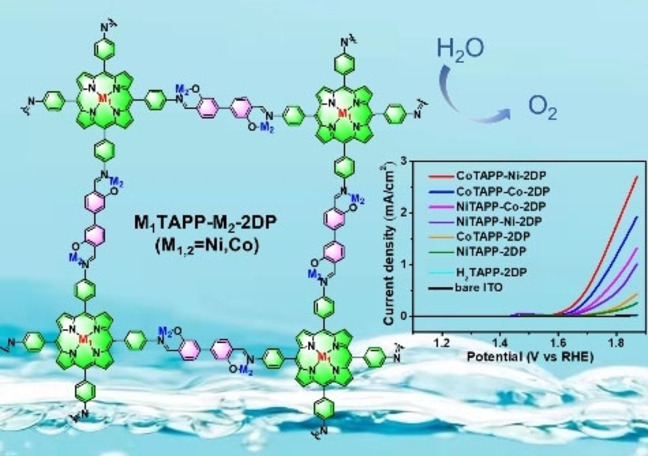
The well-defined architecture, identical density of active sites, and monolayer characteristic of bimetallic Ni, Co two-dimensional polymer model oxygen evolution reaction catalysts can decouple the intrinsic activity of active sites from other factors. The experimental and density functional theory simulation show that the relative position and local coordination environment have a significant effect on the cooperation between the metal centers.
Host-Guest Systems | Hot Paper
Synthesis and Physicochemical Properties of Cryptophazane—A Soluble and Functionalizable C1-Symmetrical Cryptophane
- First Published: 16 September 2022

Cryptophanes are molecular hosts of particular interest for the development of biosensors based on xenon magnetic resonance imaging as they bind xenon reversibly. To prepare such a biosensor, a reactive site on the cryptophane core, which is desirable for such applications but synthetically challenging, has now been introduced by replacing a crown methylene bridge by a nitrogen atom to form a cryptophazane.
Oxygen Reduction Reaction | Hot Paper
Thiolated, Reduced Palladium Nanoclusters with Resolved Structures for the Electrocatalytic Reduction of Oxygen
- First Published: 21 September 2022
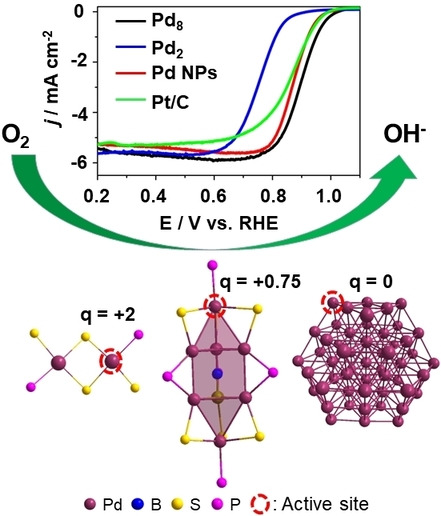
The first atomically monodisperse thiolated Pd nanocluster is obtained. It has a +6 charged di-tetrahedron Pd8 kernel and a +3 charged μ-6 interstitial B atom The as-obtained Pd nanoclusters show better catalytic activity compared to 1.4 nm Pd nanoparticles, Pd2 complexes and the commercial Pt/C catalyst for the oxygen reduction reaction.
Solar Cells
Regioisomer-Free Difluoro-Monochloro Terminal-based Hexa-Halogenated Acceptor with Optimized Crystal Packing for Efficient Binary Organic Solar Cells
- First Published: 02 September 2022

New fluorine/chlorine regio-regular hetero-trihalogenated terminal was firstly synthesized and systematically employed to enhance single-crystal packing, improve film morphology, and boost device performance of the hetero-halogenated SMAs. The PM6 : Y-FClF achieved a remarkable PCE of 17.65 %, which is far better than that of Y-Cl and Y-FCl and is the highest efficiency for the hetero-halogenated SMAs-based binary OSCs.
Oxygen Reduction Reaction | Hot Paper
An Unsaturated Bond Strategy to Regulate Active Centers of Metal-Free Covalent Organic Frameworks for Efficient Oxygen Reduction
- First Published: 21 September 2022

A novel strategy to modulate the charge distribution of active centers of organic catalysts by using unsaturated bonds (UBs) is reported. The UBs can produce para-activation, identifying the para C=N group as active centers. The effect of UBs decoration on adsorption property of the catalysts is disclosed.
Electrochemiluminescence | Hot Paper
Luciferase-free Luciferin Electrochemiluminescence
- First Published: 28 September 2022
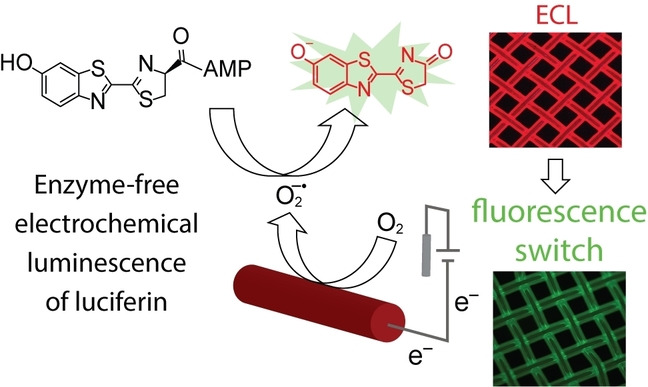
The spectral tuning—from green to red—of luciferase-free luciferin's electrochemiluminescence (ECL) was demonstrated by means of electrolyte engineering. The color change does not require, as still debated, a keto/enol isomerization of the light emitter, and brings evidence of the electrostatic-assisted stabilization of the charge-transfer (CT) excited state by double layer electric fields. Visual mapping of ECL and fluorescence fronts enables the optical quantitation of superoxide and oxyluciferin diffusivities.
Helical Polymers
Full Control of the Chiral Overpass Effect in Helical Polymers: P/M Screw Sense Induction by Remote Chiral Centers After Bypassing the First Chiral Residue
- First Published: 19 September 2022
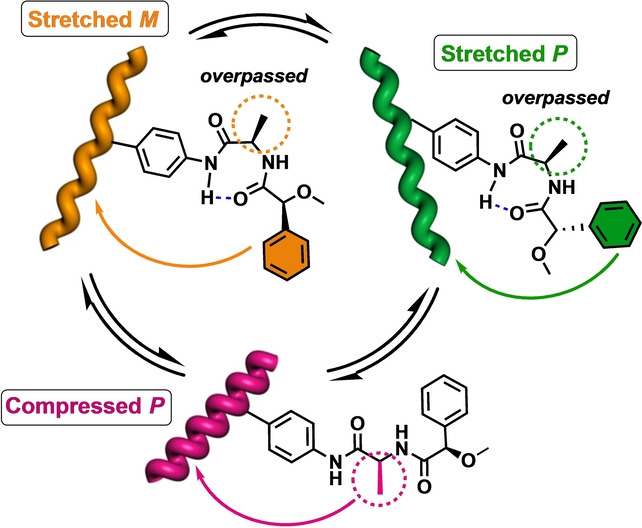
Helical sense induction in polymers is usually commanded by the chiral residue directly attached to the polymer backbone. In this work, it is demonstrated that either a P or M helical sense can be induced into a poly(phenylacetylene) by activation of a chiral overpass effect followed by selective manipulation of the conformational composition at a remote chiral center.
Total Synthesis | Hot Paper
Lithium Enolate with a Lithium-Alkyne Interaction in the Enantioselective Construction of Quaternary Carbon Centers: Concise Synthesis of (+)-Goniomitine
- First Published: 17 October 2022

We report a method for direct enantioselective alkylation of 3-alkynoic acids and 2,3-alkendioic acids that form quaternary stereogenic centers, and application of this method to the total enantioselective synthesis of complex alkaloid (+)-goniomitine. Crystallographic studies highlighted cation-π interactions between lithium and alkyne groups in the chiral lithium aggregate intermediate.
Renewable Polymers | Hot Paper
Highly Selective Preparation and Depolymerization of Chemically Recyclable Poly(cyclopentene carbonate) Enabled by Organoboron Catalysts
- First Published: 21 September 2022
Plasmonics
DNA-Encoded Gold-Gold Wettability for Programmable Plasmonic Engineering
- First Published: 26 September 2022

We reported the use of single-stranded DNA (oligo-adenine, oligo-A) to encode the wettability of gold seeds by homogeneous gold adatoms. This oligo-A-based surface chemistry engineering method will enable controllable diffusion of adsorbed atoms on the nanoscopic surface to develop single-nanoparticle plasmonic devices for extreme nanophotonics and polariton chemistry.
Allylic Compounds
Sulfenofunctionalization of Chiral α-Trifluoromethyl Allylboronic Acids: Asymmetric Synthesis of SCF3, SCF2R, SCN and SAr Compounds
- First Published: 24 September 2022
Computational Chemistry | Hot Paper
Algorithmic Explorations of Unimolecular and Bimolecular Reaction Spaces
- First Published: 08 September 2022
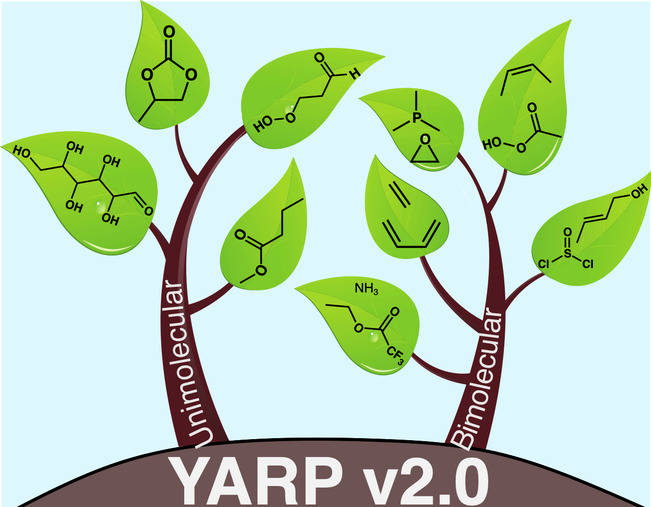
An ultra-low cost reaction exploration algorithm (Yet Another Reaction Program, v2.0) is used to predict reaction outcomes and characterize multiple unimolecular and bimolecular reaction networks. The diversity of these benchmarks illustrate that reaction exploration algorithms are approaching general-purpose capability.
Nickel Catalysis
Catalytic Multicomponent Synthesis of C-Acyl Glycosides by Consecutive Cross-Electrophile Couplings
- First Published: 27 September 2022

Reductive nickel catalysis was leveraged to orchestrate the multicomponent union of glycosyl halides, organoiodides and isobutyl chloroformate to assemble C-acyl glycosides in high anomeric selectivities. Computational studies provided insights that rationalize the origin of the high chemoselectivity. The method is applicable to the synthesis of complex C-linked disaccharides and late-stage keto-glycosylation of peptides.
Metal-Organic Frameworks
Large-Scale Self-Assembly of MOFs Colloidosomes for Bubble-Propelled Micromotors and Stirring-Free Environmental Remediation
- First Published: 19 September 2022
Biosensors
19F Barcoding Enables Multiplex Detection of Biomarkers Associated with Organ Injury and Cancer
- First Published: 19 September 2022
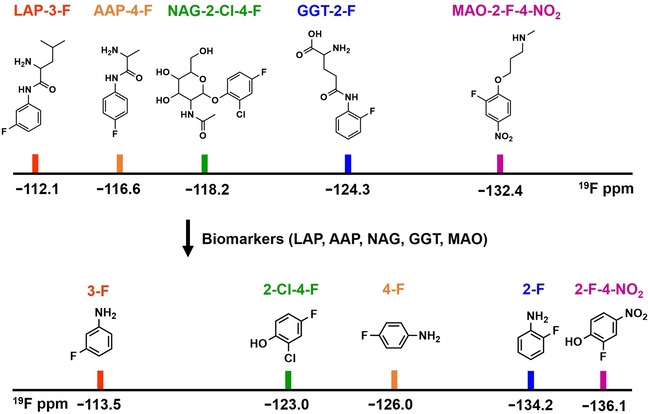
A set of molecular sensors with 19F barcodes enables multiplex detection of different biomarkers associated with organ injury and cancer. The barcoding strategy takes the advantage of 19F's high magnetic resonance (MR) sensitivity, prompt signal response to environmental changes, negligible biological background, quantitative signal output and multiplex capacity.
Narrowband Polymer Emitters
Narrowband Emissive TADF Conjugated Polymers towards Highly Efficient Solution-Processible OLEDs
- First Published: 19 September 2022
Fluorescent Probes
Engineering of Reversible NIR-II Redox-Responsive Fluorescent Probes for Imaging of Inflammation In Vivo
- First Published: 23 September 2022
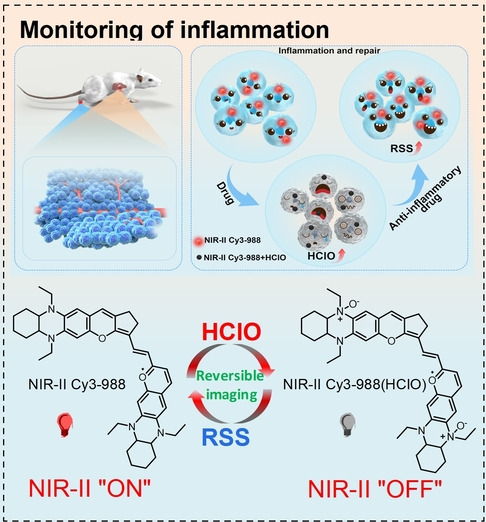
We report a new class of trimethine skeleton NIR-II fluorophores (NIR-II Cy3s) with improved stability over traditional heptamethine NIR-II fluorophores and emission above 1000 nm. The NIR-II Cy3s can reversibly respond to HClO and reactive sulfur species (RSS) and can serve as an effective platform for the reversible monitoring of the HClO/RSS-mediated redox process in a pathophysiology environment. Finally, we applied NIR-II Cy3-988 to the reversible assessment of the redox environment and dynamic effect of drug treatment in an acute inflammation model and of redox potential changes during liver injury and repair.
Cross-Coupling Reactions | Hot Paper
Intraligand Charge Transfer Enables Visible-Light-Mediated Nickel-Catalyzed Cross-Coupling Reactions
- First Published: 26 September 2022

Visible-light-triggered carbon−heteroatom cross-coupling reactions without exogenous photocatalysts were realized using a nickel catalyst that was activated through intraligand charge transfer. Ligand polymerization afforded a porous, recyclable organic polymer for heterogeneous nickel catalyzed cross-coupling reactions. The heterogeneous catalyst demonstrates stable performance in a packed-bed flow reactor during a week of continuous operation.
Fluorescent Probes
A Universal Photoactivatable Tag Attached to Fluorophores Enables Their Use for Single-Molecule Imaging
- First Published: 21 September 2022
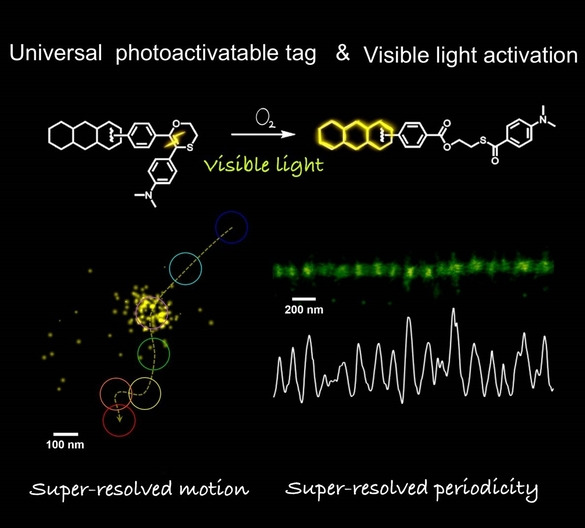
We developed a general strategy for constructing photoactivatable probes by introducing a universal tag SO on fluorescent molecules. This strategy is applicable to most of the commercial fluorophores with various skeletal structures. We successfully applied these photoactivatable probes for time-lapse super-resolution tracking in living cells and super-resolution imaging of microtubules in fixed neurons.
Supramolecular Chemistry
Kinetic Co-assembly Pathway Induced Chirality Inversion Along with Morphology Transition
- First Published: 29 September 2022
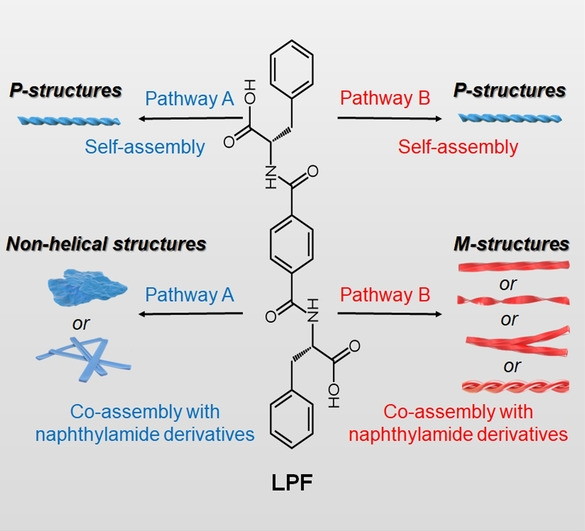
Although the self-assembly of L-phenylalanine (LPF) is insensitive to the pathway followed, the co-assembly of LPF with naphthylamine derivatives is pathway-dependent. The helical nanofibers of LPF transform into diverse kinetically trapped chiral structures with opposite chirality through a kinetic co-assembly pathway (pathway B), while only thermodynamically stable nonhelical structures are formed by the thermodynamic pathway (pathway A).
Enzyme Catalysis
C(sp3)−H Hydroxylation in Diiron β-Hydroxylase CmlA Transpires by Amine-Assisted O2 Activation Avoiding FeIV2O2 Species
- First Published: 10 September 2022
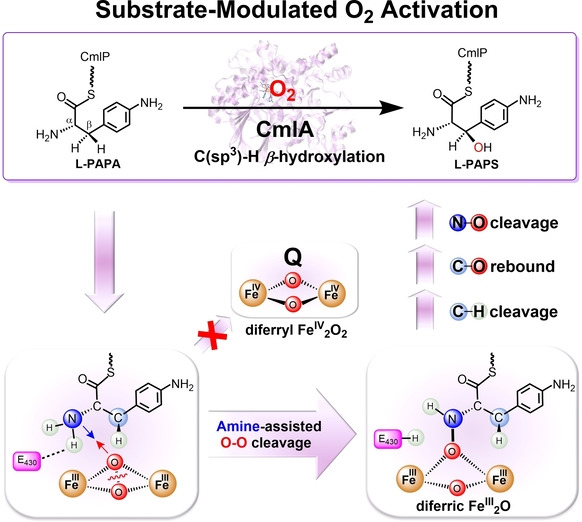
QM/MM modeling revealed that the C(sp3)−H β-hydroxylation of L-PAPA in the diiron hydroxylase CmlA transpires unprecedentedly through a traceless amine-assisted O2 activation pathway. This novel O2 activation mode modulated by the L-PAPA substrate, which is associated with the adapted coordination environment of the diiron cofactor upon O2 binding, opens up more structural and mechanistic possibilities in O2 activation by non-heme diiron enzymes.
Self-Assembly | Hot Paper
Phase Transitions in Chemically Fueled, Multiphase Complex Coacervate Droplets
- First Published: 06 September 2022

Coupling multiphase coacervate droplets to a chemical reaction cycle allows access to regimes inside the phase diagram not possible under thermodynamic control. Control over the stability, liquidity, and localization of the multiphases makes it a great synthetic platform to study the organization of membraneless organelles.
Lewis Acids
Tris(ortho-carboranyl)borane: An Isolable, Halogen-Free, Lewis Superacid
- First Published: 22 September 2022

A bottleable, halogen-free, neutral, single-site Lewis superacid, tris(ortho-carboranyl)borane (BoCb3) is synthesized in one pot from commercially available materials and its properties investigated. The electron withdrawing effect of ortho-carborane along with its lack of pi-delocalization of the LUMO induces the unusually high Lewis acidity. Catalytic C−F bond functionalizations indicate that BoCb3 is a promising Lewis acid catalyst.
Peptide Synthesis
Ynamide-Mediated Peptide Bond Formation: Mechanistic Study and Synthetic Applications
- First Published: 23 September 2022

Ynamide coupling reagents combine the advantages of conventional active esters and coupling reagents, while overcoming their disadvantages, and exhibit superiority in addressing the notorious racemization/epimerization issue. The applicability of ynamide coupling reagents has been successfully expanded to peptide fragment condensation, head-to-tail cyclization, and solid-phase peptide synthesis on the basis of a systematic mechanistic study.
Biocatalysis
Engineering Enzyme Substrate Scope Complementarity for Promiscuous Cascade Synthesis of 1,2-Amino Alcohols
- First Published: 22 September 2022
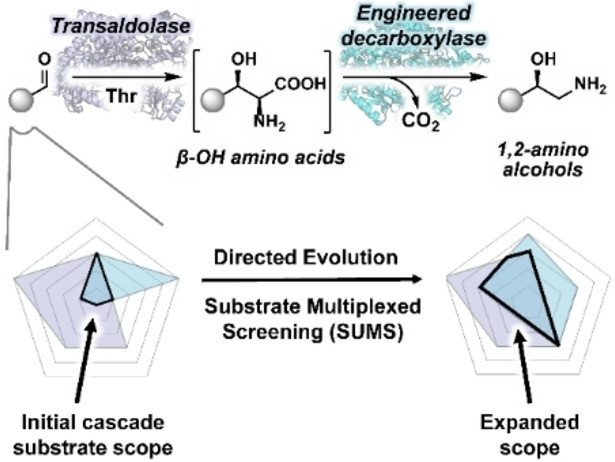
Biocatalytic cascades can be used for the efficient, asymmetric synthesis of bioactive compounds. A substrate multiplexed screening (SUMS) based directed evolution approach was implemented to improve the substrate scope overlap between a transaldolase and a decarboxylase. The matched substrate scope of the enzymes was leveraged to produce a variety of enantiomerically pure 1,2-amino alcohols in a one-pot cascade from aldehydes or styrene oxides.
Asymmetric Catalysis
Nickel-Catalyzed Defluorinative Asymmetric Cyclization of Fluoroalkyl-Substituted 1,6-Enynes for the Synthesis of Seletracetam
- First Published: 22 September 2022

Nickel-catalyzed asymmetric cyclization of fluoroalkyl-substituted 1,6-enynes with boronic acids is achieved triggered by C(sp3)−F bond activation, which provides an expedient access to 4-fluorovinyl-substituted 2-pyrrolidones in good yields with remarkably high levels of chemo-, regio- and enantioselectivities (90–99 % ee). The utility of this strategy was demonstrated in the enantioselective synthesis of the antiepileptic drug Seletracetam.
CO2 Photoreduction | Hot Paper
Facilitating Molecular Activation and Proton Feeding by Dual Active Sites on Polymeric Carbon Nitride for Efficient CO2 Photoreduction
- First Published: 22 September 2022

Dual-site synergism of vacant and protonated pyridine N in polymeric C3N4 significantly polarized the inert CO2 molecules and eliminates the formation energy barrier of key *COOH intermediates, inducing a state-of-the-art activity enhancement (183 times) in CO production. Our atomic-precision strategy offers a promising way to overcome the technical challenges in molecular activation and rate-limiting proton transfer during CO2 photoreduction.
Metal-Organic Frameworks | Hot Paper
Reversible Light-Controlled CO Adsorption via Tuning π-Complexation of Cu+ Sites in Azobenzene-Decorated Metal-Organic Frameworks
- First Published: 23 September 2022
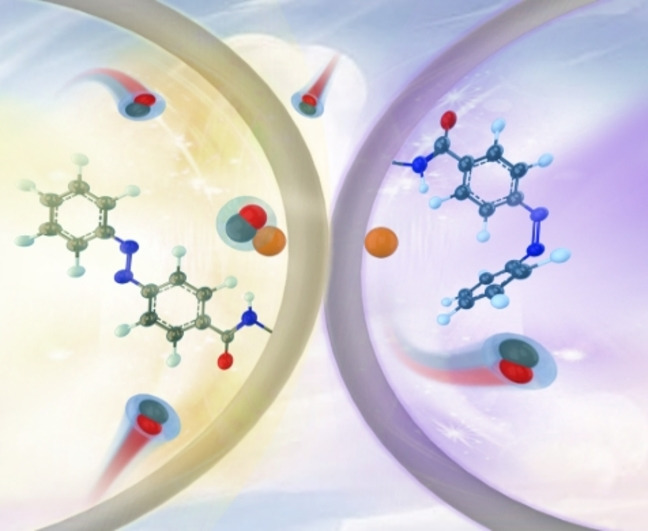
Smart adsorbents are fabricated by introducing Cu+ into azobenzene-decorated metal-organic frameworks, in which azobenzene acts as light-responsive motifs and Cu+ as π-complexing sites. Ultraviolet-/visible-light irradiation triggers the isomerization of azobenzene, causing the changes in electrostatic potential around Cu+. This exposure/shelter effect adjusts CO capture and release by shifting light.
Microporous Materials
2,2′-Biphenol-based Ultrathin Microporous Nanofilms for Highly Efficient Molecular Sieving Separation
- First Published: 23 September 2022
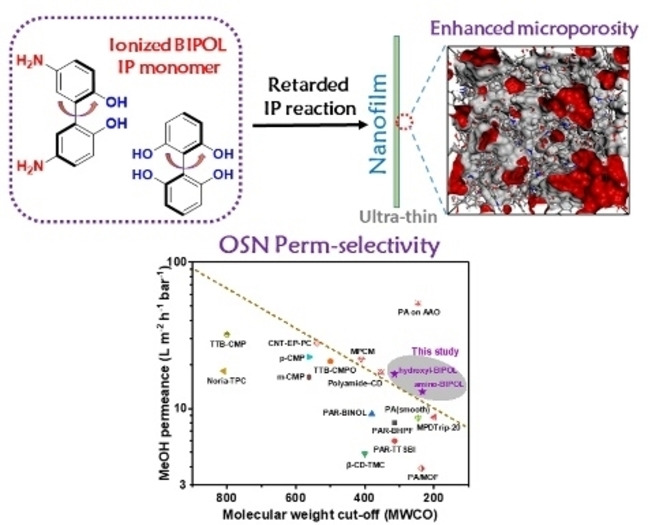
Ultra-thin microporous polymer composite membranes with extraordinary perm-selectivity for organic solvent nanofiltration were fabricated by employing two novel 2,2′-biphenol (BIPOL) derivatives as IP monomers. The enhanced microporosity arises from the hyper-crosslinked network structure and monomer rigidity. Moreover, it can achieve precise separation of organic molecules with similar molecular weights on their charge and molecular size.
Boron Chemistry
A Pyridine-Stabilized N-Phosphinoamidinato N-Heterocyclic Carbene-Diboravinyl Cation: Boron Analogue of Vinyl Cation
- First Published: 13 September 2022
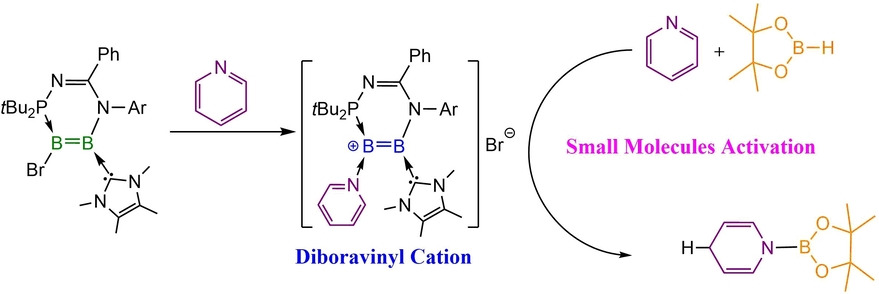
A pyridine-stabilized N-phosphinoamidinato N-heterocyclic carbene-diboravinyl cation was obtained through the displacement reaction of the bromide substituent on a diborene derivative using pyridine. This newly formed species was shown to be a boron analogue of the vinyl cation which could be used for the activation of small molecules.
Biocatalysis
Hydrophilicity-Based Engineering of the Active Pocket of D-Amino Acid Oxidase Leading to Highly Improved Specificity toward D-Glufosinate
- First Published: 23 September 2022
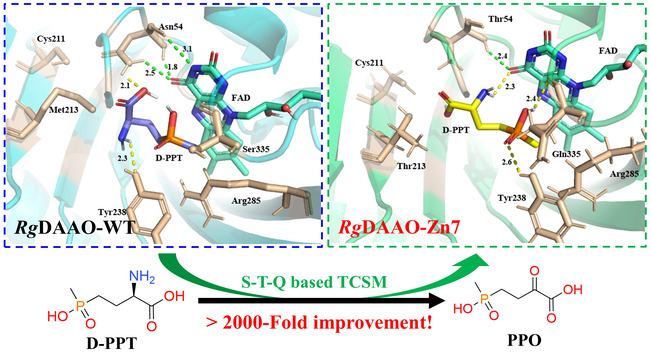
Hydrophilicity-based triple-code site-directed mutagenesis (S-T-Q) was applied to the wild-type enzyme RgDAAO, leading to a mutant Zn7 with greater than 2000-fold improvement in specific activity toward the unnatural substrate D-glufosinate, which was converted into PPO, a precursor of an excellent herbicide, L-PPT. Computational analysis revealed that the higher activity was mainly caused by an extended reaction pocket with greater hydrophilicity.
Asymmetric Allylic Alkylation
Cooperative Catalyst-Enabled Regio- and Stereodivergent Synthesis of α-Quaternary α-Amino Acids via Asymmetric Allylic Alkylation of Aldimine Esters with Racemic Allylic Alcohols
- First Published: 26 September 2022
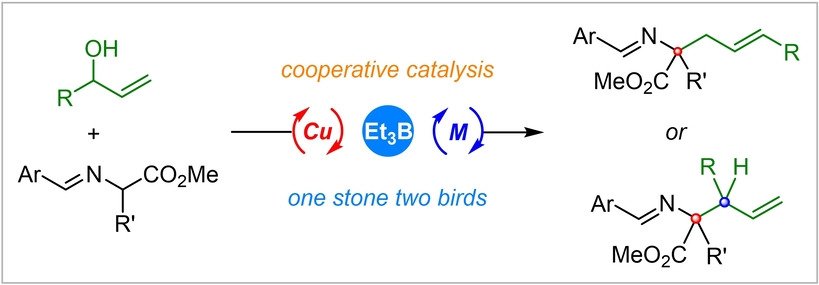
The regio- and stereodivergent asymmetric α-allylation of aldimine esters with racemic allylic alcohols was enabled by cooperative catalysis. The Et3B additive plays a significant role in ionizing allylic alcohols to form electrophilic metal-π-allyl species and simultaneously promotes the formation of nucleophilic Cu-ylides. Computational mechanistic studies revealed the role of the Et3B additive and the origins of stereo- and regioselectivities.
Supramolecular Chemistry
Self-Assembly of Peapod-like Micrometer Tubes from a Planet-Satellite-type Supramolecular Megamer
- First Published: 21 September 2022

A planet-satellite-type amphiphilic supramolecular megamer is presented. It exhibits an unprecedented hierarchical self-assembly process in aqueous solution. The self-assembled structures formed by the megamer evolve from vesicles to vesosomes and eventually to a peapod-like structure with micrometer-sized tubes as the pod and vesicles encapsulated inside it as the peas.
Polymerization
An Atom-Economic Enzymatic Cascade Catalysis for High-Throughput RAFT Synthesis of Ultrahigh Molecular Weight Polymers
- First Published: 23 September 2022
Zeolite Nanosheets
Amorphous Aluminosilicate Nanosheets as Universal Precursors for the Synthesis of Diverse Zeolite Nanosheets for Polymer-Cracking Reactions
- First Published: 22 September 2022

A versatile method allows zeolite nanosheets (NSs) to be prepared from single-species amorphous aluminosilicate NSs (AAS-NSs). The AAS-NSs were prepared by the two-dimensional reactor in amphiphilic phases (TRAP) method. Using this approach four zeolite types were prepared from single-species AAS-NSs by the dry gel conversion (DGC) process with structure-directing agents (SDAs).




